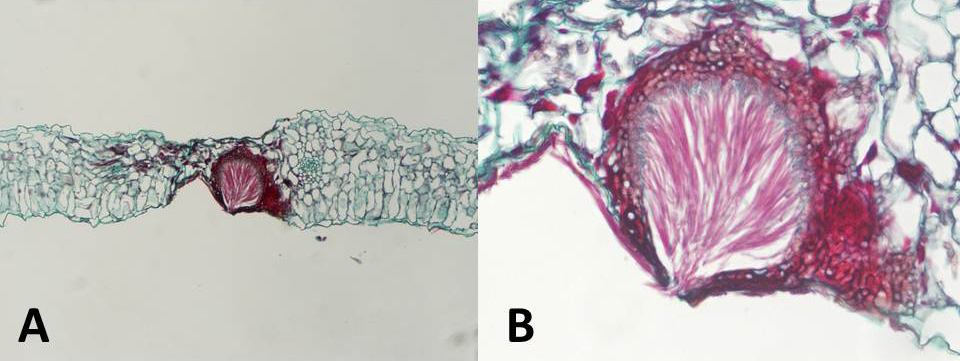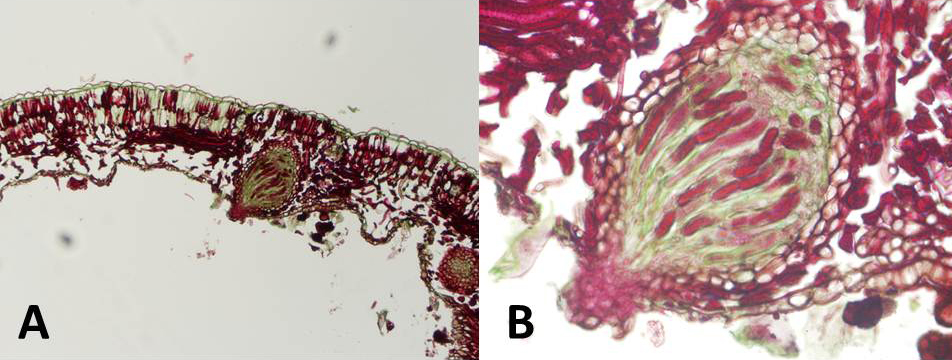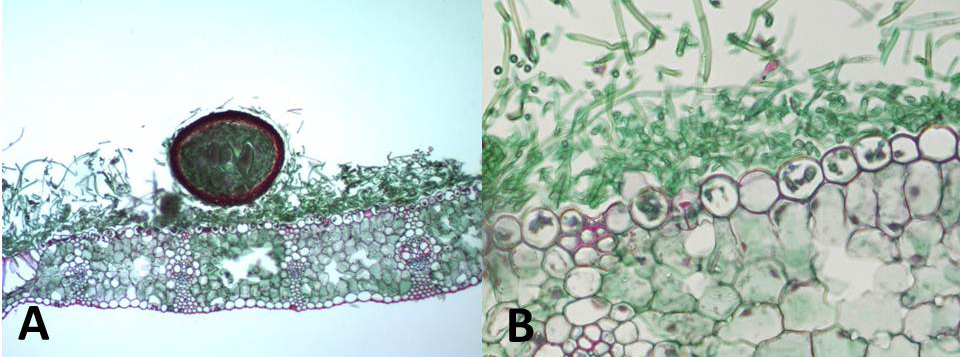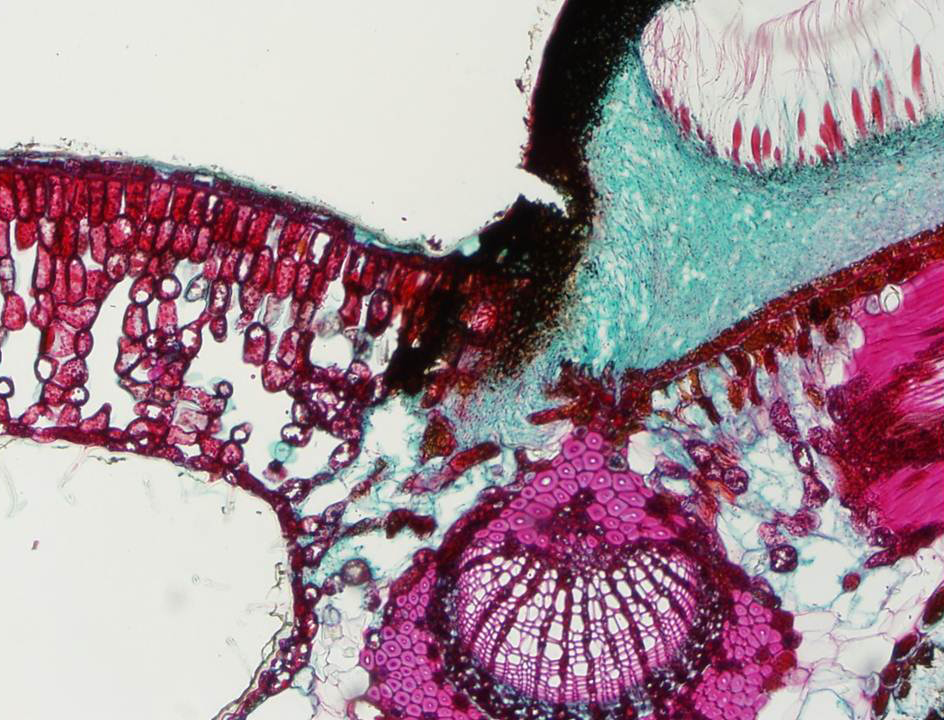Introduction
Some may argue that labs are by nature active learning environments, but from my perspective, traditional labs that merely ask students to observe, draw and label specimens or structures which are already defined by the instructor are only marginally different from lectures where material is “presented” to students. The difference between a traditional lab and an active learning lab is not necessarily defined by what students are expected to do during lab, for example observing, drawing, and labeling activities are acceptable in both types of labs. Instead, the difference is that the activities in an active learning lab cannot be completed unless the student is really thinking about what he or she is doing.
It is important to point out that there is some debate about whether active learning strategies really result in better learning when compared to traditional teaching techniques where instruction is fully explained by the instructor (1,6-8,11,12,16,19,20,23). That said, some generalities have emerged from the educational literature regarding when and where active learning may best be employed. To summarize, active learning appears to be more appropriate for higher order skill development (i.e. critical thinking, analysis, and application) and the reinforcement of lower-order content (i.e. facts and concepts) than it is for the introduction and transfer of lower-order content. This is, in part, because students require enough background knowledge and skills to support engagement with the activity (2,6,8,11-13,19,20). In fact, minimally guided activities, such as discovery and experiential learning models, akin to teaching someone to swim by throwing them in a pool, have repeatedly been shown to be less efficient and effective at teaching content and concepts than instruction that is fully explained by the instructor (6-8,11,17,19,20,23). However, instructor guided approaches, such as cooperative learning (14,18), and guided inquiry (22), which integrate active learning with traditional instruction, have been shown to be quite effective (2,7,8,12,14). This appears to be especially true for the purpose of reinforcing recently learned content and skills (6), and building higher order thinking skills (8). The inquiry-based strategy for teaching disease cycles, published in Plant Health Instructor (24), is a good example of a guided active learning approach designed for the classroom.
This paper provides some examples of simple, active learning lab activities using prepared slides. These activities were developed for my Introduction to Plant Pathology course, which is an upper division course for biology majors at my university. For a complete lab that also includes active learning activities with fungi in culture and diseased plant samples see the 2014 PHI Laboratory Article (5). In this article I discuss how to manage active learning in the lab, including a description of the guided inquiry strategy that I use, guidance on how to facilitate active learning in the lab, and considerations for developing new active learning activities. The article ends with some additional comments about why I prefer to use an active learning approach to teach labs.
Engaging students in lab using prepared slides
Prepared slides are excellent educational tools. They ensure that students have access to important observations, provide opportunities to build microscopy and observational skills, and require little time to prepare. However, traditional lab activities where students are given a set of slides and asked to draw and label predefined structures are often completed without meaningful engagement. Below are three suggestions for how slides might be used differently in lab so that students must engage with the material to complete the activity. It is important to point out that slides that are easy to interpret, meaning there is little distortion from the sectioning and staining processes, are more appropriate for these types of activities than those that require explanation for interpretation.
Cover the labels. Instead of providing students a handful of slides and telling them exactly what each structure is and which parts of each structure they should draw and label, ask students to use their lecture notes and textbook to figure it out themselves. For example, Figures 1, 2, and 3 are slides of different ascomycete reproductive structures. For each slide, ask students to identify the type of reproductive structure, draw and label the important components of the structure (they should be able to figure this out from their notes), and determine whether the structure is sexual or asexual. In my lab, students observe slides for 7 different types of reproductive structures, which provides ample opportunity to compare and contrast morphologies (5).

Figure 1.

Figure 2.

Figure 3.
This type of activity requires students to notice the details needed to distinguish each structure by sight. It is a nice fit for learning outcomes (10) related to the development of content knowledge and observational skills. The required compare and contrast portion of the activity also provides students with a method to analyze content in a way that may improve their understanding and help them prepare for examinations.
Compare description to slide. This activity is designed to give students practice with lecture material and help them build content knowledge. For each slide, the students are provided with a description of the pathogen, and asked to figure out what is wrong with the description based on their observation of a slide. Using Figure 1 as an example, the description might be, “This pathogen is producing an asexual reproductive structure called a perithecium. A perithecium is a flask-like structure that forms on the outside of infected host tissue. Within the perithecium there are asci, each containing 8 conidia. The conidia are released when the perithecium, at maturity, splits into two.” If more guidance is needed, the number of mistakes within each description may be provided.
Analyze pathogen colonization of host tissues. In this activity, prepared slides are used to help students work on their understanding of how pathogens influence disease symptoms of hosts. This type of content requires a sound understanding of plant and pathogen anatomy and physiology, and for many students this is something that will have to be worked on during the activity. Because the content is challenging, this activity is very structured, with specific questions and hints embedded within the activity to help lead students to the answers. Though challenging, this activity fits very well with lecture material from the plant-pathogen interaction chapter of the text book that I use (21), and the expectation that students should have a general understanding of how disruptions by a pathogen to the anatomy and physiology of a plant can lead to specific symptoms. I have provided two activity examples. The first goes with Figure 3, the second with Figure 4.

Figure 4.
1. Observe the cross section of wheat leaves infected with Erysiphe graminis, the cause of powdery mildew of wheat and answer the following questions to determine which host tissues the fungus colonizes, and how this colonization pattern matches the symptoms of powdery mildew. You may compare the infected wheat leaf to the healthy corn leaf slide (provided) if you have difficultly answering the questions. Corn and wheat leaf anatomy are not exactly the same, but they are close enough for this activity.
*Hint – Look for haustoria to help you figure out which tissues are affected.
a) Does the fungus colonize the epidermal tissue?
b) Does the fungus colonize the mesophyll tissue?
c) Does the fungus colonize the vascular tissue?
d) Where colonization occurs, is it primarily intercellular or intracellular?
e) Chlorosis is a more common symptom of powdery mildew than necrosis. Based on the colonization pattern (your answers to a-d), explain why this makes sense?
f) Does this fungus cause wilting? Again, use the colonization pattern to explain your answer.
2. A cross section of an oak leaf infected with Rhytisma sp., the cause of tar spot, is provided. Answer the following questions by comparing the areas of the leaf where the fungal signs are present with the area where no signs occur.
a) Does the fungus colonize the palisade mesophyll tissue?
b) Does the fungus colonize the spongy mesophyll tissue?
c) Does the fungus colonize the vascular tissue?
d) Where colonization occurs, is it primarily intercellular or intracellular?
e) Based on your observations of pathogen free and colonized host tissues, what type of symptom would you expect this fungus to cause on oak? Explain your answer.
Managing The Active Learning Environment
Transitioning the lab environment from a traditional setting to an active learning setting is not difficult as long as the instructor has a plan of action and is consistent with the plan, and the students know what is expected of them. A strategy to facilitate active learning in the lab and for developing new active learning activities is presented in the following sections.
Choosing an active learning strategy. Of the many guided active learning strategies that are used in the classroom, some, such as problem-based learning and cooperative learning, are very structured with specific guidelines for the instructor and students to follow (3,9,15). Others, often referred to as active learning, guided inquiry, or student-centered learning, are more open ended (4). The strategy presented here is a modified version of a cooperative learning model that I used as a teaching assistant at Florida International University (9,15), and includes the following components:
1. The activities are designed to be knowledge or skill challenges (i.e. puzzles).
2. The activities are presented as tasks rather than instructions.
3. Students are encouraged to work together to complete the tasks or solve problems.
4. Students are expected to make sure that everyone they are working with understands the material.
5. The instructor’s role is that of a facilitator to learning rather than a teacher.
It is worth explaining why I think these five guidelines help to support student engagement. First, because the lab activities are designed to be challenging, but fun, they create an atmosphere of engagement that, in my opinion, inspires students to do their best. The small modification of presenting the activities as tasks instead of a list of instructions requires students to think about how they are going to complete each activity, which is an obvious first step of student engagement. Encouraging students to talk to each other about their observations, and expecting them to help each other to understand the material, leads to students using terminology in conversation. This gives the stronger students an opportunity to take their understanding to a higher level as they help their peers with the material. Finally, because the instructor’s focus is to facilitate learning, students must find the answers to their content questions instead of relying on the instructor to give them the answers.
Facilitating learning. One of the most challenging components of active learning is transitioning from teacher to facilitator. Perhaps most difficult is resisting the temptation to directly answer students’ content questions. Here is one approach. When students ask questions that were covered in lecture, ask them to look in their notes or book for the answer while you wait. Waiting ensures that students will follow through with this request. Other benefits of waiting include making sure students finds the correct answer, and being there to help them if they are unable to interpret their notes. This strategy has allowed me to catch misperceptions that I would have never predicted. It usually only takes a student about 60 seconds to find the answer in the notes, but when it takes longer, I leave and tell them that I will return in a few minutes to check their answer. Either way, once the student has found the answer, I do my best to give some praise, like “I knew you would find it”.
As a facilitator, I avoid giving away the correct answers when students are still working on the Tasks. This accomplishes the goal of having my students be confident in the answers. If they are not sure their answer is correct and have to ask me, then they have more work to do before they move on to the next task. Some students will ask if they have the correct answer after every station. Often students are excited about their answer and want to know if they are correct, but sometimes they are just guessing and hoping to get the right answer without having to work for it. Either way, instead of saying, “Yes” or “No”, responding with a “Maybe” or engaging them in conversation to ask them why they think their answer is correct often results in more meaningful interactions. If their answer does not make sense, an “Are you sure?” response can prompt more conversation and the opportunity to redirect. With the better students, questioning them, even when their answer is correct helps determine if they are confident in their answers.
Preparing students for active learning. Preparing students for active learning is as simple as explaining your expectations for their participation, but this is an important step that should not be ignored. Perhaps most importantly, is the need to explain your role as a facilitator; specifically, that you will be redirecting their content questions to their notes or text, and that you will not go over the correct answers until the end of lab. Without this explanation, some students may not respond kindly when the response to their questions are not answers, but rather instructions to find the answer in their resources. I have found that this scenario is easily avoided when students are properly prepared.
Practicing with an easy activity before attempting an activity that includes challenging material also works well to prepare students. In my introduction to Plant Pathology lab, I use a simple sign and symptom activity to introduce students to active learning. In this activity, I lay out as many diseased specimens as I can find and ask students to draw and describe the signs and symptoms they see. They must also classify each symptom as one of the five symptom types defined in lecture (necrotic, liquid secretion, change in coloration, change in form, or wilt), which requires the use of their notes or textbook (21). As students work on this task, I walk around the room and reinforce participation that is aligned with my expectations (i.e. positive comments when students have their notes or textbook out, are working together, or find their own answers), and redirect participation that is not (i.e. redirect questions to the text or notes, encourage students to work together, show students the type of information they should be recording, promise again that answers will be reviewed at the end). By the second lab meeting, most students are meeting my expectation for participation without further direction.
Encouraging cooperation. Asking students to collaborate is a great first step towards cooperation, but it does not guarantee it will happen. I have found that students are more likely to work together in meaningful ways if the lab is set up so that students working on the same task are at the same location. Instead of providing each table one set of the lab materials and having each student perform each exercise one at a time, the materials for each task are set up at stations and students must move around the room to visit each station. For example, if the activity involves a slide, I will place 2 to 4 microscopes with the same slide at a table so students working on the same task can talk to each other about what they see. This type of lab layout can be time consuming to prepare and take down, but I believe the student-student interaction that it supports it is well worth the effort.
Developing active learning activities. Obviously, a successful active learning activity must engage students. My initial strategy for developing active learning activities was simply to take a traditional lab activity and convert it into some sort of puzzle in the form of a problem designed to test ingenuity or knowledge. I still rely on this technique, but have discovered that a puzzle is not enough to guarantee engagement. Fortunately, research findings about when active learning strategies are more likely to be effective, as discussed in the introduction section of this article, have really helped increase the odds that the activities I develop will be successful. I now strive to develop activities that are not only engaging, but also appropriately challenging (i.e. reinforcing instead of introducing content), and well aligned with one or more of the learning outcomes of the course. A learning outcome is a learning objective or goal that includes a plan of assessment (10). The use of learning outcomes helps me understand my own expectations for student learning, which improves my instruction in multiple ways. Examples of learning outcomes that align with the first prepared slide activity (Cover the Labels) include:
• Students should be able to identify common reproductive structures of ascomycetes and label important parts of these structures, without a word-bank, from cross sections of tissues on prepared slides during a lab practical, and from similar diagrams or photographs on a lecture exam.
• Students should be able to focus a microscope and select the best magnification to make observations needed to answer questions on a lab practical.
Why I prefer this method
Implementing active learning labs is, in my opinion, more enjoyable than teaching labs using traditional methods. It is very satisfying to see students working together, engaging with the lab activities, and having a good time in the process. It also feels great to see them develop as students and scientists throughout the semester. For example, by the end of the semester, most students go directly to their notes or the textbook to find the answers to their questions themselves. I still remember the professor who taught me this skill during my junior year of college, and I am happy to pass it on.
Although I do not have direct comparative data to document greater learning with this technique, I can report that student performance on lab practical assessments, which includes questions similar to those in the active learning activities, tends to be about 50% higher on average in courses where I use active learning (upper division courses) than in the course where I do not (a lower division course). Obviously some of this difference can be explained by differences in quality and maturity of the students in upper division versus lower division courses; however, I believe some of the difference can be attributed to active learning. At the very least, I think active learning activities prepare students for the type of questions that they will see on a lab practical; these students know what to study and understand how deeply they need to understand the content. In contrast, students trained using traditional lab instruction can complete the labs without comprehending the content at the same level that the instructor expects and intends to evaluate. I doubt that the only benefit of active learning is providing students with a better framework from which to study, but even if it is, I find it well worth the effort.
Literature Cited
1. Alfieri, L., P.J. Brooks, and N.J. Aldrich. 2001. Does discovery-based instruction enhance learning? Journal of Educational Psychology 103:1-18.
2. Baeten, M., E. Kyndt, K. Struyven, and F. Dochy. 2010. Using student-centered learning environments to stimulate deep approaches to learning: Factors encouraging or discouraging their effectiveness. Educational Research Review 5:243-260.
3. Barrows, H.S. and R.M. Tamblyn. 1980. Problem-based learning: An approach to medical education. Vol. 1. Springer Publishing Company.
4. Bonwell, C.C., and J. A. Eison. 1991. Active Learning: Creating Excitement in the Classroom,” ASHEERIC Higher Education Report No.1, George Washington University, Washington, DC.
5. Cantonwine, E.G. 2014. An Active Learning Lab on a Selection of Ascomycete Reproductive Structures and their use in Disease Diagnosis. The Plant Health Instructor. Online DOI: 10.1094/PHI-T-2014-1223-01.
6. Clark, R., P.A. Kirschner, and J. Sweller. 2012. Putting students on the path to learning: The case for fully guided instruction. American Educator, Spring 2012:6-11.
7. Goodwin, L., J.E. Miller, and R.D. Cheetham. 1991. Teaching Freshmen to Think: Does Active Learning Work? BioScience 41:719-722.
8. Hmelo-Silver, C.E., R.G. Duncan, and C.A. Chinn. 2007. Scaffolding and achievement in problem-based and inquiry learning: A response to Kirschner, Sweller, and Clark (2006). Educational Psychologist 42:99-107.
9. Johnson, D.W., R.T. Johnson, and K.A. Smith. 1991.Cooperative learning: Increasing college faculty instructional productivity. ASHE-ERIC Higher Education Report No. 4, George Washington University.
10. Kennedy, D., A. Hyland, and N. Ryan. 2007. Writing and using learning outcomes: a practical guide. Cork: University College Cork, Ireland.
11. Kirschner, P.A., J. Sweller, and R.E. Clark. 2006. Why minimal guidance during instruction does not work: An analysis of the failure of constructivist, discovery, problem-based, experiential, and inquiry-based teaching. Educational psychologist 41:75-86.
12. Kuhn, D. 2007. Is direct instruction an answer to the right question? Educational Psychologist 42:109-113.
13. Kyndt, E., F. Dochy, K. Struyven, and E. Cascallar. 2011. The perception of workload and task complexity and its influence on students’ approaches to learning: A study in higher education. European journal of psychology of education 26:393-415.
14. Miller, J.E. and J.E. Groccia. 1997. Are four heads better than one? A comparison of cooperative and traditional teaching formats in an introductory biology course. Innovative Higher Education 21:253-273.
15. Penwell, R.A., S.F. Elsawa, and T. Pitzer. 2004. Cooperative and active learning in undergraduate biological laboratories at FIU—Implications to TA teaching and Training. Bioscene 30:9-12.
16. Prince, M. 2004. Does active learning work? A review of the research. Journal of engineering education 93:223-231.
17. Prince, M.J. and R.M. Felder. 2006. Inductive teaching and learning methods: Definitions, comparisons, and research bases. Journal of Engineering Education 95:123-138.
18. Slavin, R.E. 1980. Cooperative learning. Review of educational research 50:315-342.
19. Sweller, J.P., A. Kirschner, and R.E. Clark. 2007. Why minimally guided teaching techniques do not work: A reply to commentaries. Educational Psychologist 42:115-121.
20. Schmidt, H.G., S.M.M. Loyens, T. van Gog, and F. Paas, F. 2007. Problem-based learning is compatible with human cognitive architecture: Commentary on Kirschner, Sweller, and Clark (2006). Educational Psychologist 42:91-97.
21. Schumann, G.L. and C.J. D’Arcy. 2010. Essential Plant Pathology, Second Ed. APS Press, St. Paul, MN.
22. Tanner, K.D. 2012. Promoting student metacognition. CBE-Life Sciences Education 11:113-120.
23. Tobias, S. and T.M. Duffy (Eds.). 2009. Constructivist theory applied to instruction: Success or failure? Taylor & Francis, New York, NY.
24. Vincelli, P. 2005. An Inquiry-Based Approach to Teaching Disease Cycles. The Plant Health Instructor. Online DOI:10.1094/PHI-T-2005-0222-01
